-
Car Reviews
- Car News
-
Car Comparisons
Latest comparisons
- Chasing Deals
After its core, diesel-power van arrived and impressed in new-generation form, Ford now looks to broaden its Transit Custom range even further
It may balk at the title of ‘commercial vehicle specialist’, but with limited sales from its passenger vehicle lineup and Ranger popularity that defies belief, Ford knows it must double down on what buyers actually want.
The second-generation Transit Custom has been a winner for Ford since it arrived in late 2022, hitting an all-time Aussie sales record in 2024 and receiving relatively positive critical acclaim, including from our recent long-term review of the diesel-fed Sport.

But with Australia’s New Vehicle Emissions Standards (NVES) set to ratchet further down each year, Ford is pivoting away from a diesel-only focus, adding a plug-in hybrid and even a fully electric version known as the ‘E-Transit Custom’.
We’ve reviewed the latter previously, so today we’ll be focusing on the plug-in along with the rugged new Trail grade that evolves and enhances the base diesel van with all-wheel drive to target Ranger-types seeking more utility than their ute has to offer.
Getting into a bare-bones Transit Custom will cost $56,590 before on-roads for the base Trend grade with three seats across the front row and in a SWB configuration. LWB and crew-cab versions, along with the better-equipped Sport, see prices creep up to $62,990.
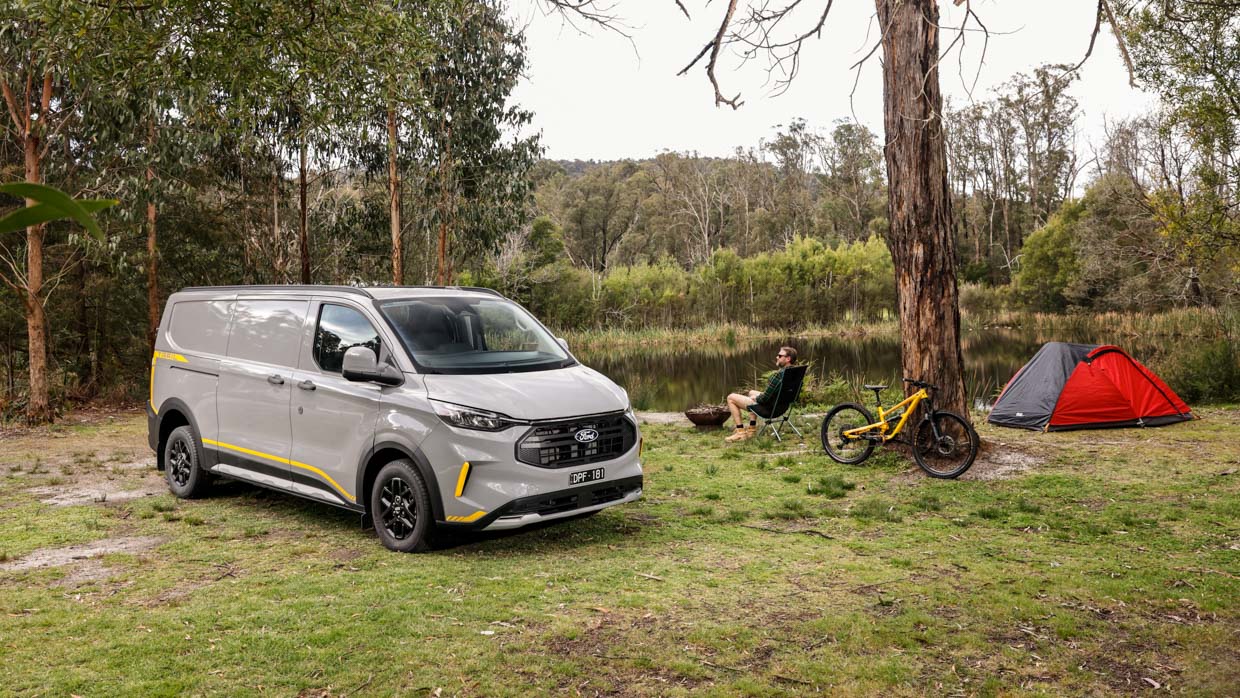
Based on the Trend and undercutting this figure by $1000 is the new Trail, available only in LWB configuration. Equipped with an exuberant styling pack with decals and black 16-inch wheels wrapped in light-duty all-terrains.
The plug-in hybrid and fully electric options for the new Custom are available in Trend and Sport guise; respectively paired with short and long-wheelbase bodies exclusively.
Prices kick off at $67,590 plus on-roads for the plug-in Trend, with the Sport creeping up to $69,990. The fully electric E-Transit Custom slaps an extra $10K on these figures.

With outright driving range restricted to 307km (WLTP) from its 64kWh battery, the E-Transit Custom leaves room to spare for the average Aussie driver, which Ford quotes as using 78km on a typical day, but the commitment to full electrification won’t be for everyone.
Borrowing its plug-in hybrid from the Escape midsize SUV, the Custom features an 11.8kWh battery providing a considerably more modest 54km of electric-only range (WLTP).
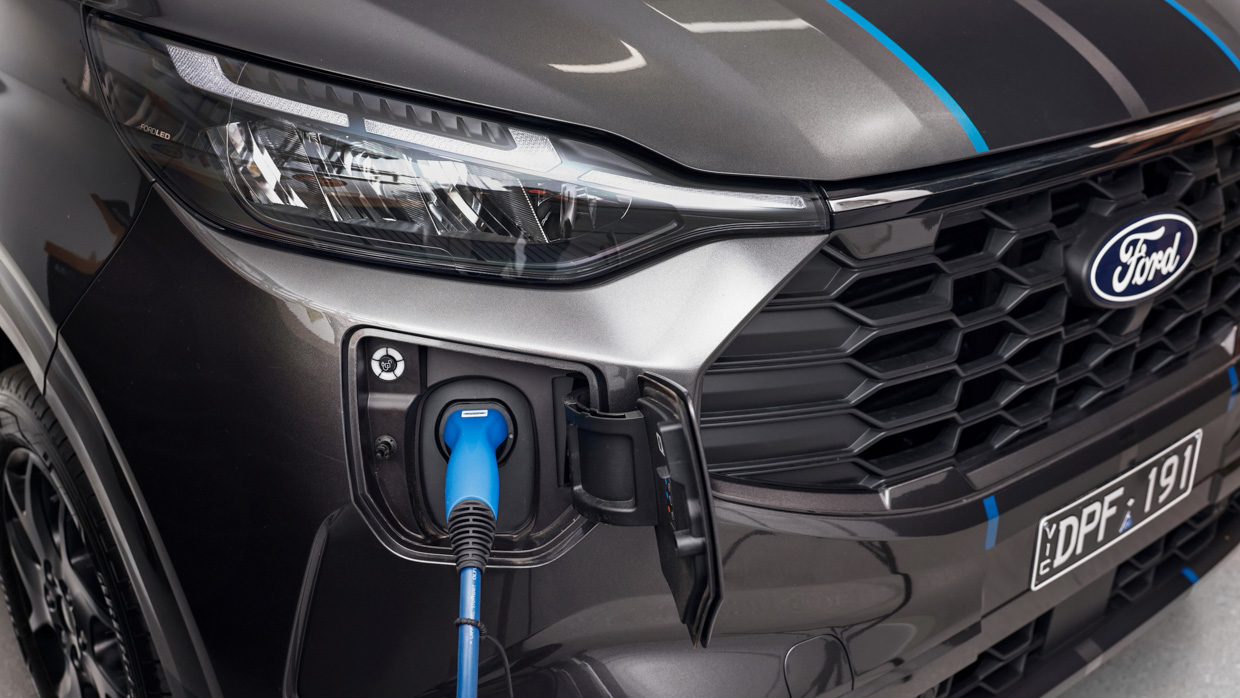
It’s the broadest drivetrain selection offered by any midsize van in Australia, with the likes of the Peugeot Expert and Mercedes-Benz Vito going either full EV or combustion, with the segment-leading Toyota Hiace still diesel-only.
The Trail and PHEV represent two very different branches out from the Transit status quo, but we’re here to see if they’ve pulled off these ideas convincingly.
The driving experience of these two new grades is similar to the core diesel range and that’s a good thing. Independent rear suspension keeps it more comfortable and fun to drive than the bulk of its rivals that still use live axles.
By pushing the wheels as far out to the corners as possible in pursuit of cabin and load space, the Custom has also gained a surefooted demeanour that lends itself well to road-holding, both on the bitumen and off it.
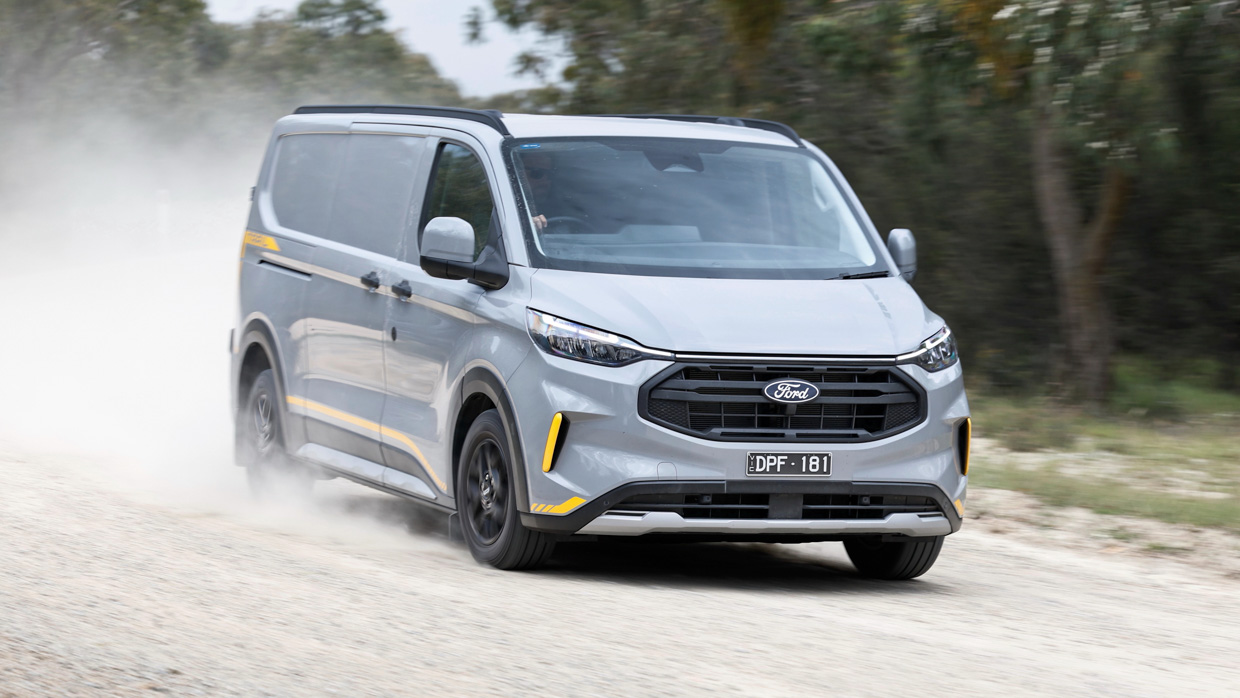
A quick spin in the new Trail grade on unsealed dirt found that the all-wheel-drive system is keen to engage, with an electronic clutch pack in the rear axle providing consistent power delivery at all four corners.
There’s also a specialised ‘Trail’ mode that disables some safety nannies to hand control back to the driver on unsealed surfaces. Additional underbody protection has been fitted beneath the Trail, but there are still some points of weakness exposed.
With no changes to the suspension to increase the ride height like a Mitsubishi Delica, the Trail grade is limited by its 118mm ground clearance, though it at least has relatively short overhangs to enhance its approach and departure angles.
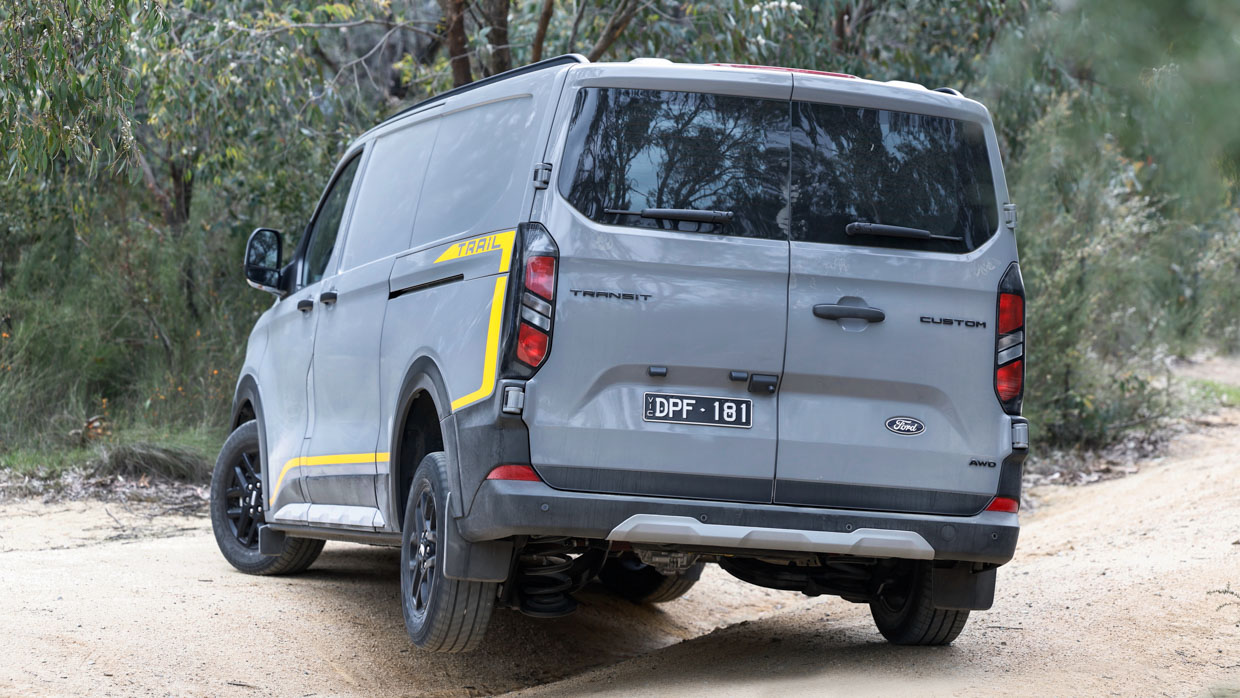
Ford says it’s equipped the Trail with ‘all-terrain tyres’ but we feel it’s being overly generous with this definition. Those heading bush will be better off fitting more suitable rubber.
It might be pitched at private buyers, but Trail still has a commercial nature, with wind noise and clattering from the cargo area a consistent feature when driving. We’d be investing in some additional sound deadening if you do plan on any long trips.
The 2.0-litre four-cylinder turbo-diesel is also fairly agricultural, even if adequately powered with 125kW/390Nm fed through a smooth eight-speed automatic.
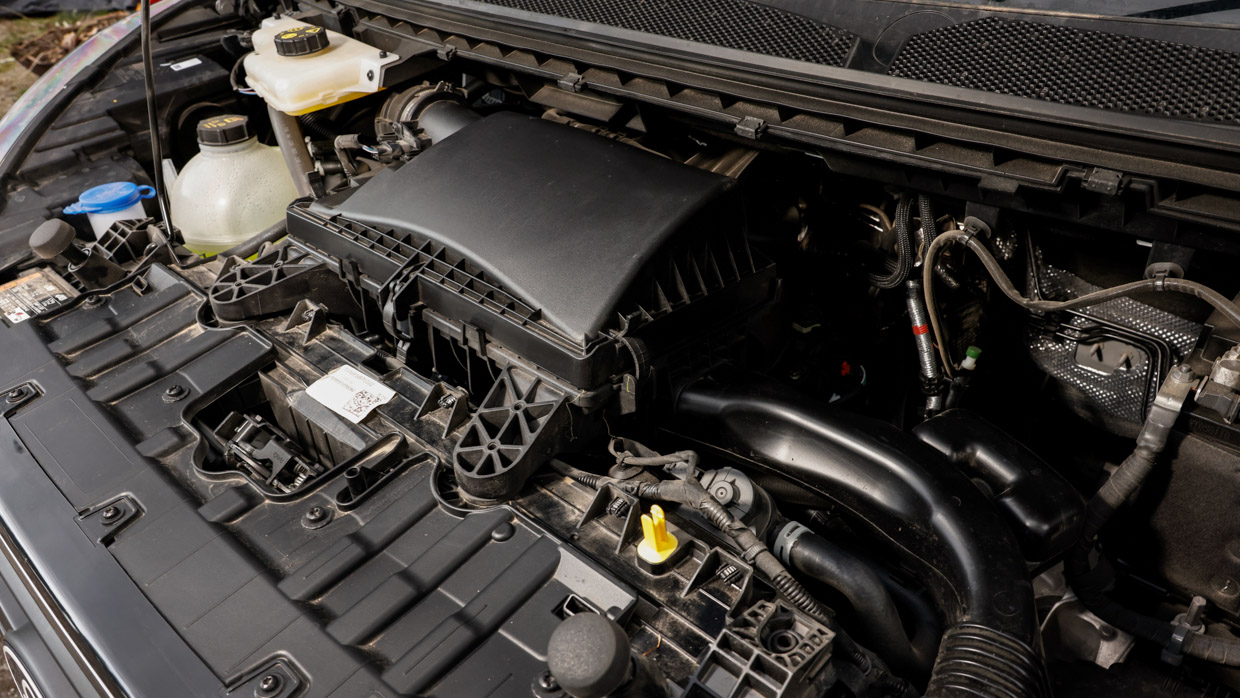
By pairing a relatively beefy 111kW/320Nm electric motor with an 86kW/209Nm 2.5-litre four-cylinder naturally aspirated petrol engine, the plug-in offers some respite in this area.
The electric motor is significantly more dominant in the default hybrid driving mode than the Ranger PHEV, with its relatively weak 75kW electric motor, and the comparative smoothness of a petrol engine over a diesel keeps things relatively refined even when it does kick in.
Less noise makes it easier to concentrate on driving, make phone calls between jobs or listen to music without turning the dial up to 11. Worthwhile thinking about, we think.
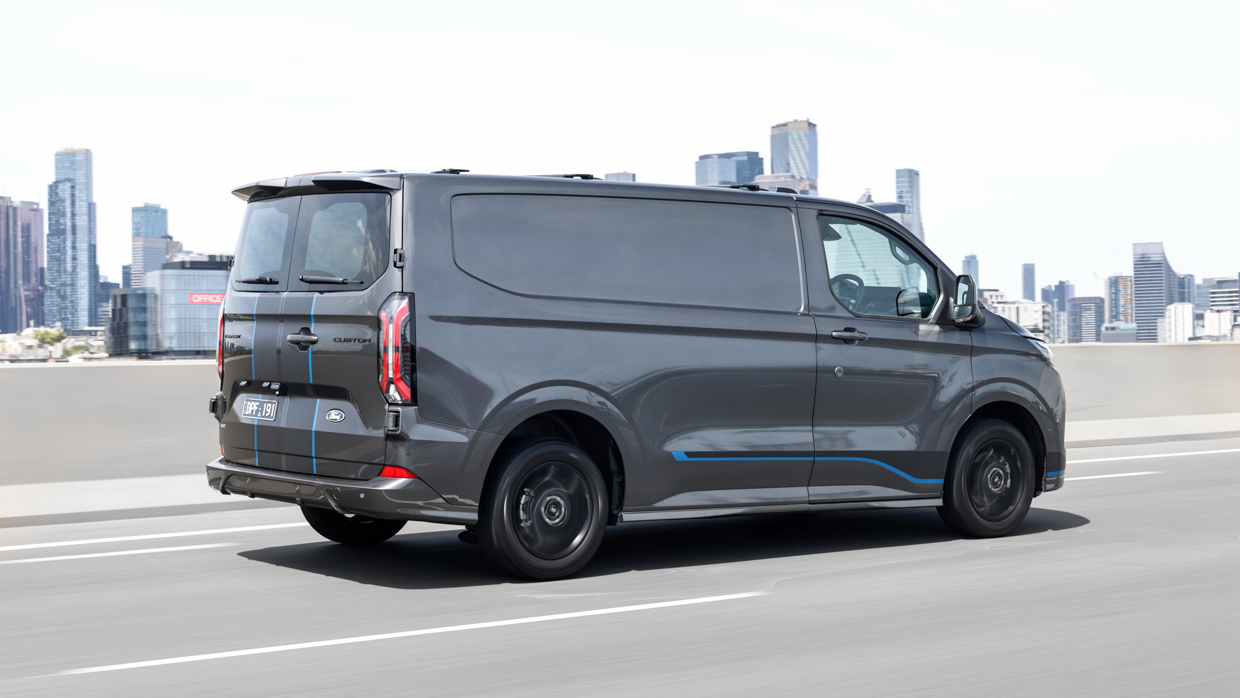
It’s equipped with a CVT transmission that only really gets loud when your foot is completely planted, and similar to the core diesel range, the plug-in version is front-wheel-drive only. We note that the E-Transit Custom is rear-wheel-drive and generally better to drive as a result.
The quoted 54km of range appears to be fairly accurate from our initial testing.
The benefits of regenerative braking and the efficiency of electric motors at low speeds mean drivers who frequent urban areas are more likely to hit this figure than those who travel primarily on highways.
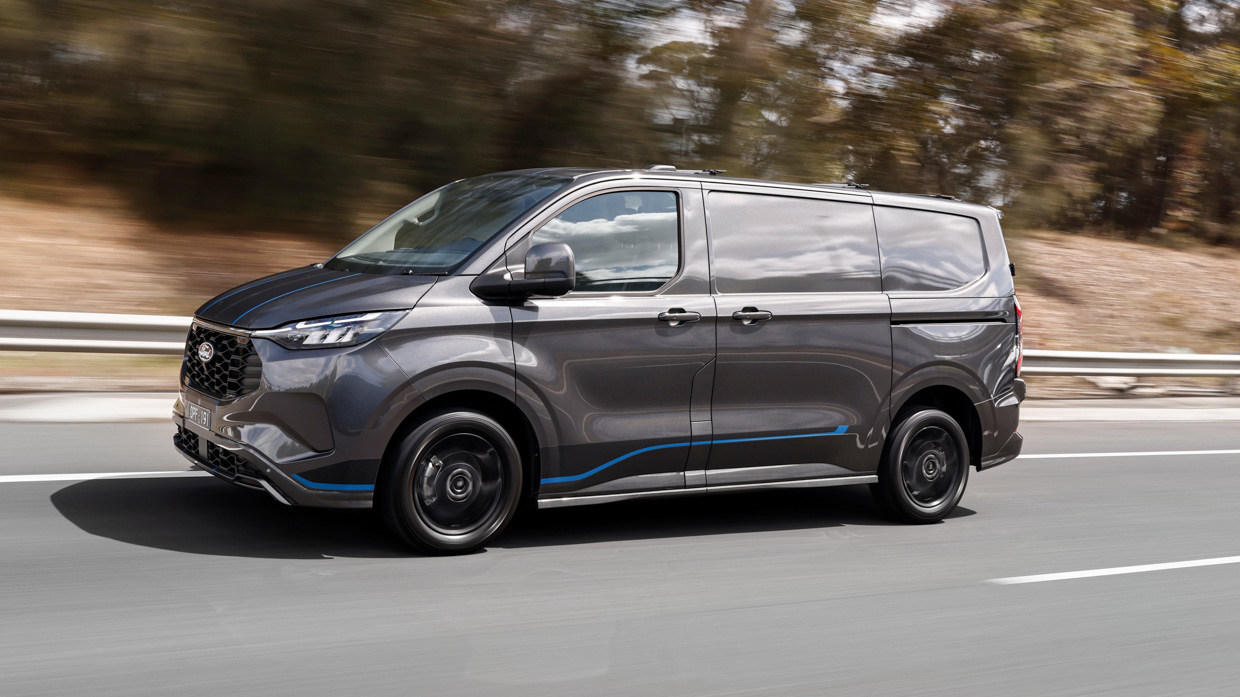
No DC fast charging is available on the plug-in, with AC charging speeds capped at 3.5kW, meaning charging from flat-to-full will take around four hours and 15 minutes if conditions are optimal.
In either form, the Transit Custom presents as a well-equipped and practical space, with a high seating position offering good visibility in all directions.
Particular compliments go to the split-mirror design to assist with short and long distance vision. We do wish it had a 360-degree camera as standard, however.

Both the Trail and PHEV Trend come fitted with a three-seat bench with heating on the outboard positions, though the former offers the ability to switch to racier dual bucket seats with yellow stitching to match the exterior.
Underseat storage, huge door bins and pockets higher up on the dashboard are brilliant for storing larger items and paperwork, but we do wish there were more places for smaller items such as keys, wallets and phones.
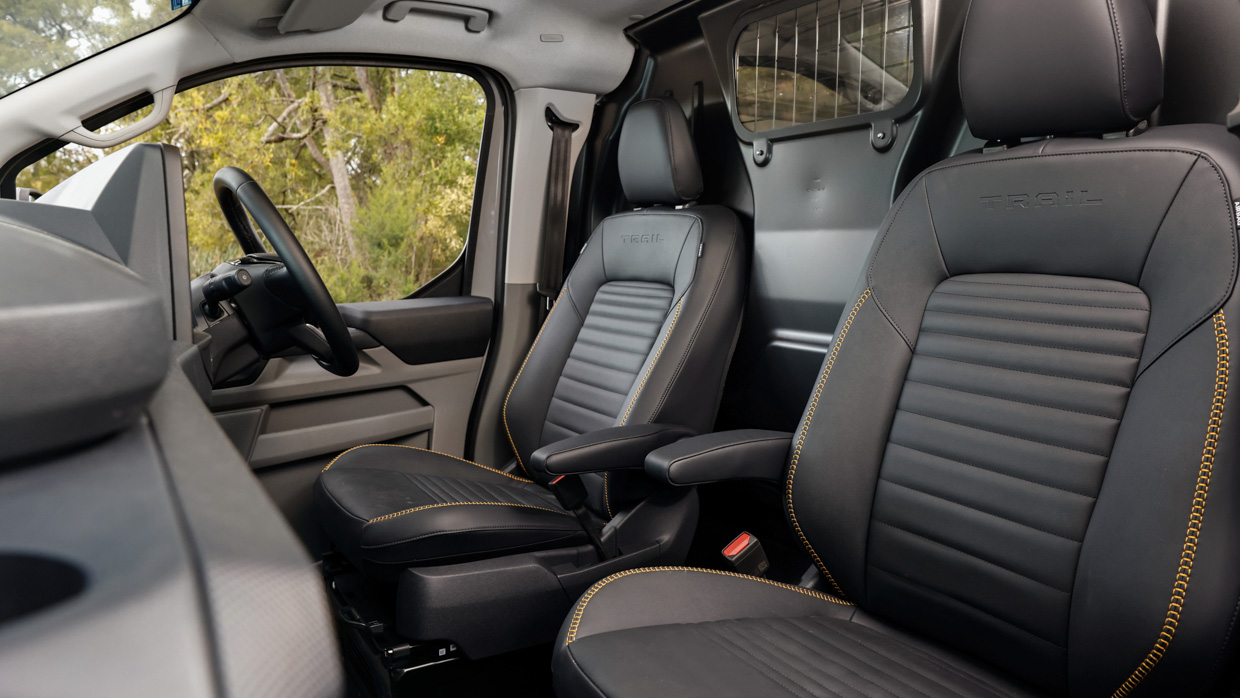
Previous experience with our long-term Transit Custom found that the 13.0-inch multimedia screen could be a bit finicky when connecting to phones. Subsequent software updates appear to have addressed this issue but further testing is required to verify this.
The 12.0-inch digital driver’s display is common among all variants and is crisp and easy to use.
It joins other standard features such as the wireless phone charger and the in-built 5G modem in the Transit Custom, which make the Custom more appealing for a modern audience.

That said, we still wish Ford would integrate physical controls for key functions such as air conditioning, as the current screen-based controls are a bit of a nuisance once your hands get dirty or if you’re wearing gloves.
Ford is still lagging on bringing the brilliant folding steering wheel to Australia which has been available in Europe since the new-gen launched nearly three years ago.
It provides the ability to prop a laptop up at a 45-degree angle, or lay the steering wheel completely flat and use it as a tray table – useful for eating lunch on the go or just doing some paperwork.
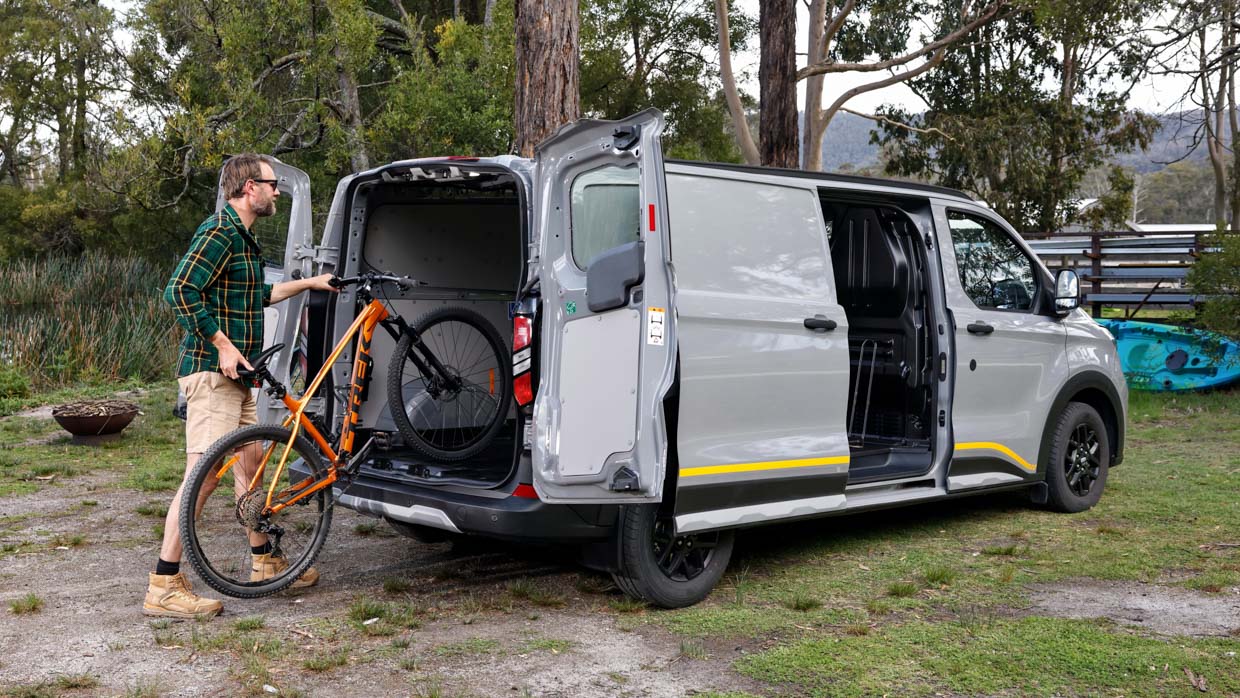
The Trail and Trend variants of the plug-in Custom sit on the long-wheel-base variation offering 6.8 cubic metres of storage space, with dual-slide loading doors (standard on PHEV) with a useful aperture of 1301mm tall by 1030mm wide. Sport PHEV variants offer 5.8 cubic metres of space.
A critical miss for the plug-in Transit Custom is the lack of vehicle-to-load capability to harness the wealth of power available from the 11.8kWh battery for charging tools, overhead lights on job sites and many more use cases.
Pro Power Onboard, to use Ford’s terminology, is available on the Ranger PHEV and even a typical diesel Ranger – or a Custom PHEV sold in Europe – is offered with a 400W inverter that will do most jobs.
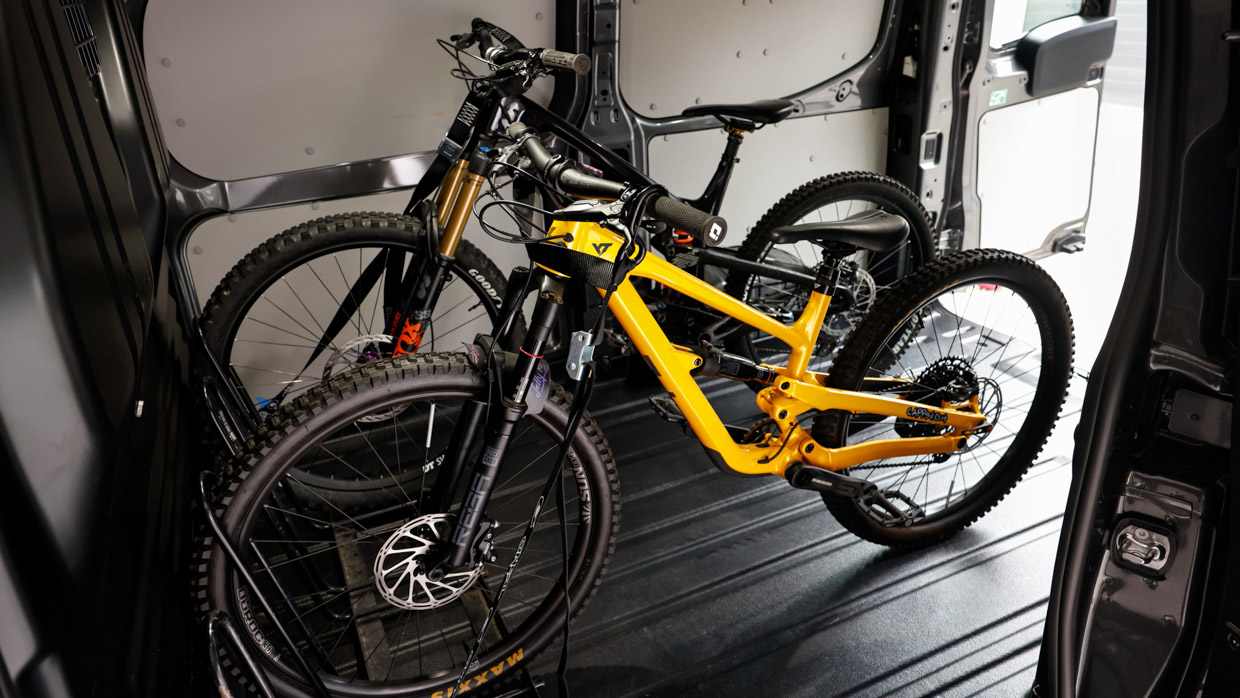
All will appreciate the healthy payload allowance of 1179kg for the Trail, a figure that actually grows for the PHEV in Trend (1206kg) and Sport (1255) guise despite the addition of electrical gubbins.
The Trail features a towing capacity of 2500kg, while the PHEV has a slightly reduced limitation of 2300kg.
Of the two variants we focused on for the most recent expansion only one has been a convincing success and that’s the Trail.
By offering unique styling and AWD for a circa-five-grand upcharge, the rugged new grade is likely to appeal not just to influencer types looking to get away on the weekend but also tradies who have found themselves bogged on a worksite more than once but who still require the secure storage capacity of a van.

For an additional $12K upcharge over the diesel, the plug-in only provides one of two key abilities buyers will be looking for: the ability to drive on all-electric power.
But with a range of just 54km this doesn’t meet the 78km average distance travelled by Aussie Transit Custom owners, who will need to be extremely diligent with their charging to maximise any cost benefit.
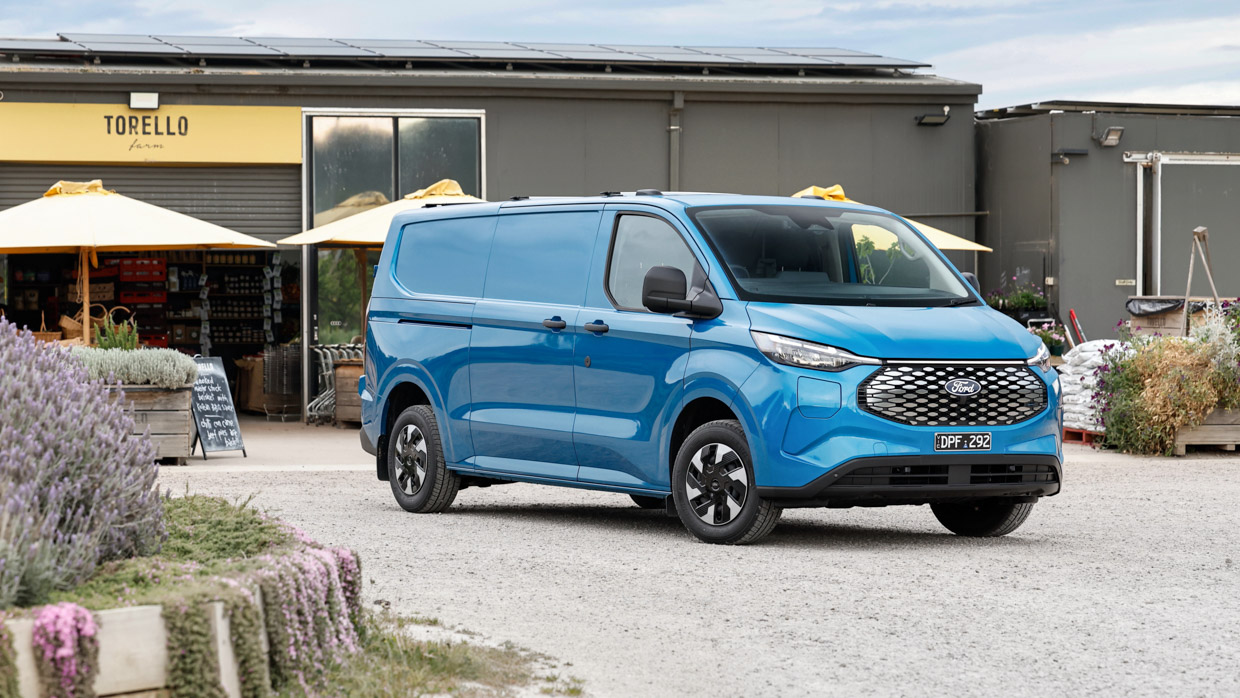
The ability to tap into the 11.8kWh battery was a key selling point of the Ranger PHEV and for good reason as it widens the use case and helps justify the added cost.
Both of these issues are resolved, and the driving experience improved, with the step up to the fully-electric E-Transit Custom. This will run buyers up an additional $10K over the PHEV but when you’re already paying $70K for a van, we can see the value in this additional commitment.
About Chasing cars
Chasing Cars reviews are 100% independent.
Because we are powered by Budget Direct Insurance, we don’t receive advertising or sales revenue from car manufacturers.
We’re truly independent – giving you Australia’s best car reviews.
The estimate provided does not take into account your personal circumstances but is intended to give a general indication of the cost of insurance, in order to obtain a complete quote, please visit www.budgetdirect.com.au. Estimate includes 15%^ online discount.
^Conditions Apply
Budget Direct Insurance arranged by Auto & General Services Pty Ltd ACN 003 617 909(AGS) AFSL 241 411, for and on behalf of the insurer, Auto & General Insurance Company Limited(ABN 42 111 586 353, AFSL 285 571).Because we don’t know your financial needs, we can’t advise you if this insurance will suit you. You should consider your needs and the Product Disclosure Statement before making a decision to buy insurance. Terms and conditions apply.
Indicative quote based on assumptions including postcode , 40 year old male with no offences, licence suspensions or claims in the last 5 years, a NCD Rating 1 and no younger drivers listed. White car, driven up to 10,000kms a year, unfinanced, with no modifications, factory options and/or non-standard accessories, private use only and garaged at night.
^Online Discounts Terms & Conditions
1. Discounts apply to the premium paid for a new Budget Direct Gold Comprehensive Car Insurance, Third Party Property Only or Third Party Property, Fire & Theft Insurance policy initiated online on or after 29 March 2017. Discounts do not apply to optional Roadside Assistance.
2. Discounts do not apply to any renewal offer of insurance.
3. Discounts only apply to the insurance portion of the premium. Discounts are applied before government charges, taxes, levies and fees, including instalment processing fees (as applicable). The full extent of discounts may therefore be impacted.
4. We reserve the right to change the offer without notice.